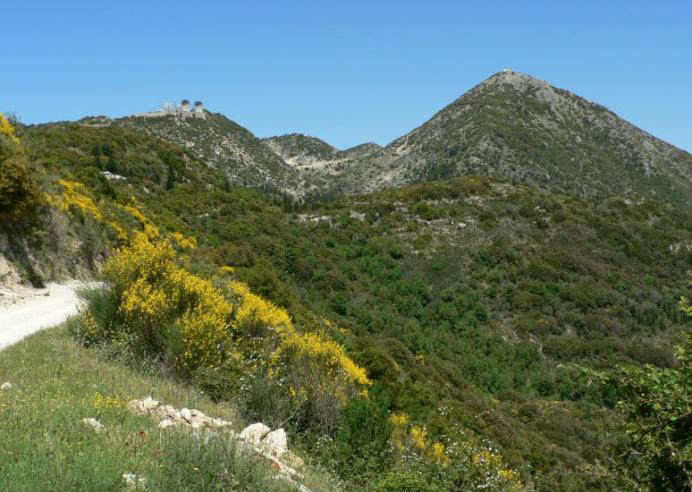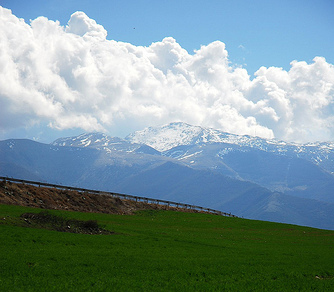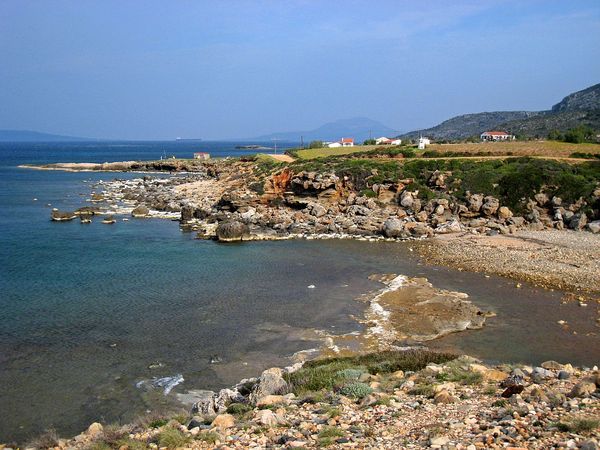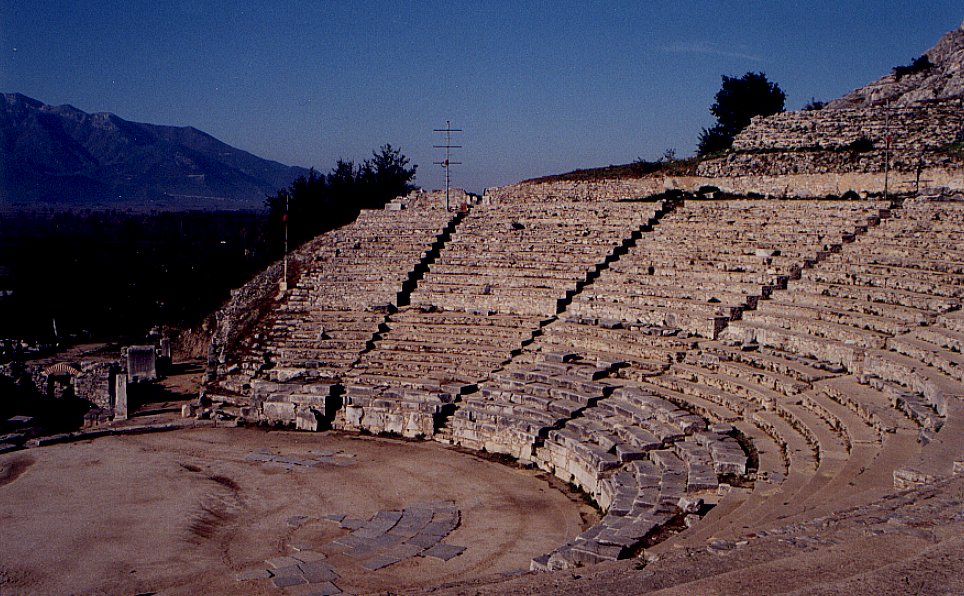Sometime around the Spring of 51 AD when Paul landed in Greece at a port town called Neapolis. From there it was only about a 3 hour walk to Philippi.
If we follow his steps we’ll meet the Phillipi that Paul did that very first day he entered through the city gates.
First the trek would take us through hill after hill. That’s what Greece is: sunny, warm, pretty, and full of hills with little valleys between them.

The road beneath our feet would be about 12 feet wide and made up of jumbo-sized flat stones. One of the things the Romans brought as they conquered was a really nice highway system. This scenic roadway was called the Via Egnatia and it stretched all the way to Rome.
 For the duration of our journey we would have constant companion to our left. Over the foothills stood an imposing single grey mountain, Pangeon by name.
For the duration of our journey we would have constant companion to our left. Over the foothills stood an imposing single grey mountain, Pangeon by name.
It might have some Springtime snow left on it’s peaks.
It would seemingly follow us all the way to Philippi the way the moon does when you’re driving in a car.
After an hour or so climbing up and down we would climb one final hill and look below into a green valley stretching out for miles. Mount Pangeon would still be on our left, but without any paltry hills to block the view.
Ahead, much like some vegetable broth left in the middle of a soup bowl would be marshland – soggy, tall grass, birds.
But off to the right our eyes could follow the Via Egnatia down the hill, across some farmland, over a few streams, and then back up one last and very steep hill. The walled city on the top would be Philippi. The city would be just more than an hour’s walk away.
Philippi was a not too big, not too small, and very urban city.
When Rome attacked and conquered Greece they granted large amounts of property (and thereby wealth) to the soldiers. The soldiers moved in and the formerly Greek city of Philippi became a Roman colony.
There were a good deal of Greeks left, but they had lost citizenship along with their property. They were no longer citizens of Greece and only a very special few were allowed to become citizens of Rome.
What didn’t change upon the transfer of power was the weather.
A typical spring day in Philippi would be sunny and warm.
Think inland Southern California, hotter than at the beaches and without the refreshing ocean breeze.
Immediately upon entering the city, through some trees on our right, we’d be able to make out an amphitheater shining in the sunlight. It was built right into the side of a hill.
The wooden stage would be invisible to us because it stood below the treeline. But the seats rose way above the treetops. This is the theater – as it stands today. Back then it would look just like this, except it would be polished marble and limestone with clean edges not yet worn by time.
Next post we’ll walk right by this amphitheater and into the city.
God Bless.






{ 10 comments… read them below or add one }
Sorry . . .I’m behind! But glad to be here and traveling with you! God bless you for taking us to Phillipi.
Deb – I’m just smiling to have you back here. Don’t think you weren’t missed
I love virtual tours! Thank you.
It’s my favorite church – it was Paul’s favorite too. The city has been abandoned for a long time – the archaeological work going on there is amazing.
Oh, to be able to walk through it. I guess through your eyes will do. 😉
the work is so good that you can really get exactly what it was like when it was it was lived in.
Love the photos plus your writing to go with!
Thank you A. Philippi was beloved by Paul – and beloved for good reason. But it was a hard place to be a Christian. God Bless.
Loving the tour, Craig! The pictures are wonderful. Can you imagine what it would have been like to have visited this amphitheater in Paul’s day? All of that polished marble? No worn edges? Thank you for sharing with us…and for stopping by last week with encouragement on the days I wasn’t able to visit here.
thank you Dianna – it wouldn’t have been the theater we are familiar with – but it would have been something – actors were actually not very high on the totem pole back then. And one of the reasons the theater and the all the pretty Roman buildings were so pretty – was that they had to keep the poor (97% of the people) from rebelling – still a treasure to see now – what was then. God bless you Dianna.
{ 6 trackbacks }